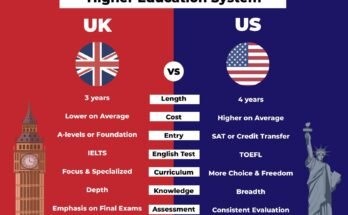Reason
The unit looks at designs made utilizing matches and tiles. A basic principle to track down the connection between the quantity of terms of an example and the quantity of matches of that word is looked for which can be communicated in various ways.
Accomplishment Objective
Interface the individuals from a successive example by their consecutive position and use tables, charts, and graphs to track down connections among numbers and the successive components of the spatial example.
AO Expansion and Other Learning Assets
Click here https://guessingtrick.com/
explicit learning results
Anticipate the following term of the spatial example.
Track down a standard to give the quantity of matches in the given term of the example.
Find the individual from the example that has the given number of matches.
math depiction
Let’s find some more interesting topics like these here 10 of 1200
This unit expands on the idea of holding utilizing a matching mounting design. A connection is a connection between the worth of one variable (variable amount) and another. On account of a matchstick design, the principal variable is the term, which is the step number of the figure, for example Term 5 is the fifth figure in the rising example. The subsequent variable is the quantity of matches expected to shape the figure.
Connections can be addressed in numerous ways. The motivation behind portrayals is to empower the expectation of additional circumstances and the comparing worth of one more factor in a rising example. For instance, portrayals can be utilized to find the quantity of matches expected to develop the 10th term in an example. Significant portrayals include:
Further insights regarding the advancement of portrayals for development examples can be found on pages 34-38 of book 9: Showing Numbers through Estimation, Calculation, Polynomial math and Measurements.
This unit gives a potential chance to zero in on the systems that understudies use to tackle number issues. Matchstick designs are totally founded on straight connections. This implies that the expansion in the quantity of matches required for the ‘following’ term is a consistent number added to the past term.
Urge understudies to consider straight examples by zeroing in on various techniques that can be utilized to include ordinal numbers in the example. For instance, the example of a triangle way comprised of 9 matches can be imagined in various ways:
Open doors for variation and separation
Learning open doors in this unit can be isolated by giving or eliminating backing to understudies and changing work necessities. Ways of supporting understudies include:
Giving matchsticks with the goal that understudies can shape examples of improvement
Involving variety to feature rehashing components in development design outlines
Facilitating estimation requests by giving number cruncher
Displaying to make tables and different strategies for understudies to record their work and lessen requests on their functioning memory.
Errands can be shifted in various ways including:
Diminishing the ‘distance’ of the terms in question, particularly anticipating the quantity of counterparts for words that are not difficult to develop and check
Diminishing the intricacy of the example, for example expanding to two, three and five rather than sixes, twelve, and so forth.
cooperative gathering so understudies can uphold others
Diminishing interest for an item, for example Oral show rather than loads of computations and words.
The setting of this unit can be adjusted to the interests and social foundation of your understudies. Matches are a reasonable and available asset, however may not bear some significance with your understudies. They might be more inspired by other meager articles like leaves or tapa (kapha) lines on garments. You can find development designs in the frieze on structures locally. Know about learning valuable open doors that connect to the everyday encounters of your understudies.
Required Asset Material
Coordinates with consumed heads, or toothpicks, iceblock sticks, nursery sticks, managed bamboo sticks, and so forth.
Present the meeting by let understudies know that Kiri made the accompanying matchsticks utilizing triangles 1, 2 and 3 – she called them 1-triangle way, 2-triangle way, and 3-triangle way. Note that 1, 2, and 3 are stanza numbers in the example of kiri.
Request that understudies draw 4-and afterward 5-triangle ways utilizing Kiri’s strategy.
What number of extra matches could be expected to make a 6-triangle way? A 7-triangle way?
What number of matches will be required for Kiri to make a 20-triangle way?
Allow the understudies to chip away at the quantity of matches expected for the twentieth term. Use Think, Match, Offer to permit understudies to look at their procedures.
That’s what kiri saw assuming she modified the matches, she could count them down rapidly. The accompanying picture shows how he modified them.
How does Kiri’s strategy function?
How might Kiri modify the 7-triangle way?
What articulation will she write to address her computation? (1 + 7 x 2 or 1 + 2 + 2 + 2 + 2 + 2 + 2 + 2)
Let the class know that utilizing her technique, Kiri says, she can think of a more limited method for counting the quantity of matches expected to make a 10-triangle way. inspire them to compose, usPictures to help his clarification, what may be Kiri’s alternate way strategy.
How about we call Kiri’s regulation, Kiri’s regulation. inquire:
Utilizing Kiri’s regulation, what number of matches could be expected to make a 20-triangle way?
Turn around the issue by inquiring: How large might Kiri at any point go with 201 matches?
Offer understudies time to foster responses and analyze their methodologies.
Do understudies move to augmentation methodologies with expanding request connected with rehashed expansion?
Are understudies ready to distinguish that the word count is essential, not the quantity of matches?
Will understudies ‘fix’ their past guidelines to see as the post number?
Kiri’s companion Jamie organized their matches in an unexpected way. His photographs seemed to be this:
Jamie says that utilizing his technique, he can see one more short method for counting the quantity of matches expected to make a 10-triangle way. Request that the class compose utilizing pictures to help their clarifications of what Jamie’s procedure is.
What number of matches could be expected to make a 20-triangle way?
How large might Jamie at any point go with 201 matches?
Request that understudies make sense of how Kiri’s regulation is unique and like Jamie’s.
Ask the Study hall: How might Kiri and Jamie clarify for another person how they can find the quantity of matches expected to cause a way to comprising of quite a few triangles, suppose 1000?
Detail thought:
Vey-un has one more method for sorting out the quantity of counterparts for a 10-triangle design. He composes 10 x 3 – 9 and gets a similar match as Kiri and Jamie, 21.
Request that understudies make sense of how Vey-un’s methodology functions. What do the numbers address in his estimations?
[Way-envision ten wonderful triangles that require 10 x 3 = 30 matches to make. He envisions that ten triangles are joined and this structures nine crossing points. He takes away nine from 30 to consider covering matches.]
Here we take a gander at a straightforward example made by assembling matches to shape an associated way of squares.
Permit understudies to sort out ways of counting the quantity of matches expected to make a square way, following a similar general strategy as above. Present the understudies with the accompanying picture.
Have your understudies construct 4-square and 5-square ways utilizing matches or drawing. Focus on the number of extra matches were added each time. Where are the extra matches found?
Ask your understudies how they could foster a fast and simple method for finding the quantity of matches expected to make a 20-square way.
What might Kiri, Jamie, and Way-Un get done for this square example?
Allow the understudies to work in gatherings of a few. Request that the gatherings draw an image telling the best way to make 20 square ways. They can explore different avenues regarding matches, and record their own photos. Do you have to draw each square?
Is there only one potential method for checking the example out?
What are a few alternate ways it could look?
A few pictures would be exceptionally useful in counting the quantity of matches expected to make a 20-square way – some not. Have understudies pick the image they like best gives a speedy and simple method for computing how progressive square ways structure and count the matches required for a 20-square way. Note the lumbering idea of over and again making squares and more than once adding three matches.
What is a more proficient method for drawing or work out the all out number of matches?
Have understudies utilize their ‘best strategy’ to confirm that 61 matches are expected to make a 20-square way.
Look at how the standards are composed:
Kiri [1 + 20 x 3] Jamie [4 + 19 x 3 Way-un [20 x 4 – 19]
Understudies can utilize these strategies or their own techniques to assess the quantity of matches expected to make 14-, 36-and 100-square ways.




